.


Administrative Region : Attica
Regional unit : Peiraias
Piraeus (play /paɪˈriːəs/ or /pɪˈreɪ.əs/; Modern Greek: Πειραιάς Peiraiás [pireˈas], Ancient Greek: Πειραιεύς, Peiraieús, pronounced [peːrajěːu̯s]) is a city in the periphery of Attica, Greece. Piraeus is located within the Athens Urban Area,[1] 12 km southwest from its city center (municipality of Athens), and lies along the east coast of the Saronic Gulf.
According to the 2001 census, Piraeus had a population of 175,697 people within its administrative limits, making it the third largest municipality in Greece and the second largest within the urban area of the Greek capital, following the municipality of Athens. The municipality of Piraeus and several other suburban municipalities within the peripheral unit of Piraeus form the wider Piraeus Urban Area or Greater Piraeus, with a total population of 466,065.
Piraeus has a long history, which dates back to ancient Greece. The effects of its natural space and geographical place have been critical factors for the configuration of the historical fate of Piraeus. The development of the harbour has been always combined with periods of proportional acme and progress of the city, while in the periods of the harbour's decay the city languished. The city was largely developed in the early 5th century BC, when it was selected to serve as the port city of classical Athens and was transformed into a prototype harbour, concentrating all the import and transit trade of Athens. Consequently, it became the chief harbour of ancient Greece but declined gradually after the 4th century AD, and began to grow again in the 19th century, especially after the declaration of Athens as the capital of Greece. In modern era, Piraeus is a big city bustling with life and an integral part of Athens, having the biggest harbour in the country and all the typical characteristics of a huge marine and commercial-industrial center.
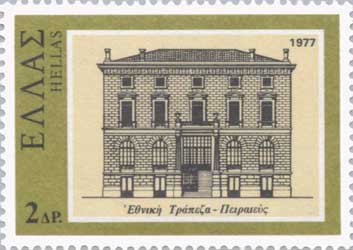
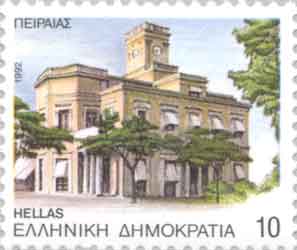
The port of Piraeus is the chief port in Greece, the largest passenger port in Europe[2][3] and the third largest in the world,[4] servicing about 20 million passengers annually. With a throughput of 1.4 million TEUs, Piraeus is placed among the first ten ports in container traffic in Europe and the top container port in Eastern Mediterranean.[5] The city hosted events in both the 1896 and 2004 Summer Olympics held in Athens.
History
Ancient times
Further information: Classical Athens
Funerary relief for a girl,flanked by her parents (330/320 BC); Archaeological Museum of Piraeus.
Piraeus, a name which roughly means 'the place over the passage', has been inhabited since the 26th century BC.[6] In prehistoric times, Piraeus was a rocky island consisted of the steep hill of Munichia, modern day Kastella, and was connected to the mainland by a low-lying stretch of land that was flooded with sea water most of the year and was used as a salt field whenever it dried up. Consequently it was called the Halipedon, meaning the 'salt field', and its muddy soil made it a tricky passage. Through the centuries, the area was increasingly silted and flooding ceased, thus by early classical times the land passage was made safe. In ancient Greece, Piraeus assumed its importance with its three deep water harbours, the main port of Cantharus and the two smaller of Zea and Munichia, and gradually replaced the older and shallow Phaleron harbour, which fell into disuse.
The Long Walls connecting the ancient city of Athens to its port of Piraeus.
One of several streets of the Hippodamian grid that was applied to the hill of Munichia.
In the late 6th century BC, the area caught the attention due to its advantages. In 511 BC, the hill of Munichia was fortified by Hippias and four years later Piraeus became a deme of Attica by Cleisthenes. In 493 BC, Themistocles initiated the fortification works in Piraeus and later advised the Athenians to take advantage of its natural harbours' strategical potential instead of using the sandy bay of Phaleron.[7] In 483 BC, the mighty Athenian fleet was transferred to Piraeus and was built in its shipyards, distinguishing itself at the battle of Salamis against the Persians in 480 BC. Since then Piraeus was permanently used as the navy base for the developed and powerful fleet of Athens. After the second Persian invasion of Greece, Themistocles fortified the three harbours of Piraeus and created the neosoikoi (ship houses); the Themistoclean Walls were completed in 471 BC, turning Piraeus into a great military and commercial harbour. The city's fortification was farther reinforced later by the construction of the Long Walls under Cimon and Pericles, with which Piraeus was connected to Athens. Meanwhile, Piraeus was rebuilt to the famous grid plan of architect Hippodamus of Miletus, called Hippodamian plan, thus the main agora of the city was named after him as an honour. As a result, Piraeus flourished and became a port of high security with a great commercial activity and a city throbbing with life.
During the Peloponnesian War, Piraeus suffered the first breakdown. In the second year of the war the first cases of the Athens plague were recorded in Piraeus.[8] In 404 BC, the Spartan fleet under Lysander blockaded Piraeus and subsequently Athens surrenderred to the Spartans who put an end to the Delian League and the war itself. Piraeus would follow the fate of Athens and was to bear the brunt of the Spartan rage, as the city's walls and the Long Walls were torn down, the Athenian fleet surrendered to the winners and some of the triremes were burnt, while the neosoikoi were also pulled down. As a result the unfortified and tattered port city was not able to compete with prosperous Rhodes, which controlled the commerce. In 403 BC, Munichia was seized by Thrasybulus and the exiles from Phyle in the battle of Munichia where the Phyleans defeated the Thirty Tyrants of Athens, but in the following battle of Piraeus the exiles were defeated by the Spartan forces.
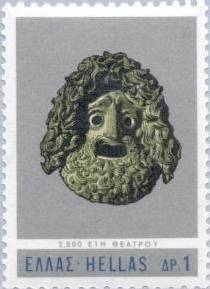
Mask from Piraeus, 4th c. BC National Museum of Athens
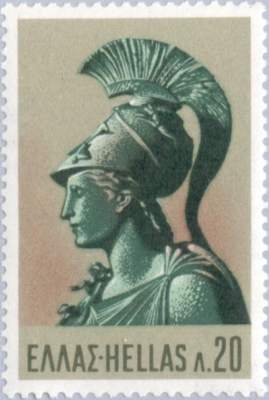
Athena of Piraeus, discovered 1959 in Piraeus together with other sculptures such as Apollo (Kouros) and Artemis
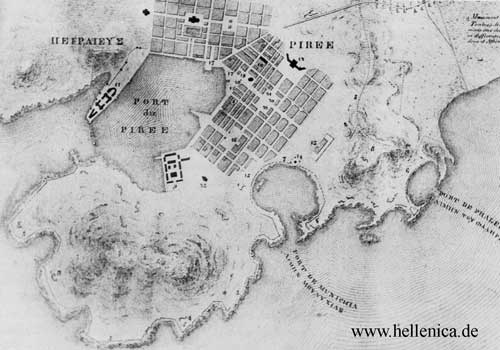
First Plan of modern Piraeus, Stamatios Kleanthis and Eduard Schaubert 1834.
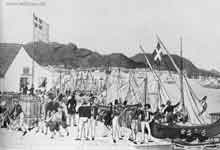
Themistocles, Piraeus


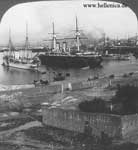
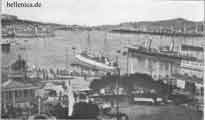
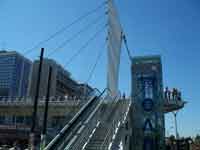
Piraeus port pedestrian bridge
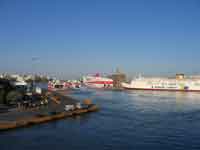
After the reinstatement of democracy, Conon rebuilt the walls in 393 BC, founded the temple of Aphrodite Euploia and the sanctuary of Zeus Sotiros and Athena, and built the famous Skevothiki of Philon, the ruins of which have been discovered at Zea harbour. The reconstruction of Piraeus went on during the period of Alexander the Great, but this revival of the town was quashed by Roman Lucius Cornelius Sulla, who captured and totally destroyed Piraeus in 86 BC. The destruction was completed in 395 AD by the Goths under Alaric I. Piraeus was led to a long period of decline which lasted for fifteen centuries. During the Byzantine period the harbour of Piraeus was occasionally used for the Byzantine fleet, but it was very far from the capital city of Constantinople. The city lost even its ancient and original name that was forgotten, named Porto Leone by the Venetians in 1317, meaning 'Lion's Port' from the Piraeus Lion standing at the harbour's entrance, and Porto Draco by the Franks.[6]
Ottoman period
In 1456, Piraeus became known as the Aslan Liman (Lion's Port), a name given by Ottoman Turks during the Ottoman occupation of Greece. The Piraeus Lion was looted in 1687 by Francesco Morosini during his expedition against Athens and was carried to the Venetian Arsenal, where it still stands today. A copy of the lion statue is on display at the Archaeological Museum of Piraeus. Throughout the Ottoman occupation, especially before the beginning of the Greek War of Independence, Piraeus was mostly deserted, except for the monastery of Saint Spyridon (1590) and a customs house, and it was only used for small intervals for commercial issues. Although there were numerous land owners, Athenians did not live in the area.
The customs office of the port of Piraeus in 1837. Watercolor by the Bavarian captain Ludwig Köllnberger.
There were at least two failed attempts to create a new town, the first in 1792 by bringing population from Hydra and the second during the Greek War of Independence in 1825 by the installation of people from Psara, but it was not until 1829, when permanent inhabitation of the area was restarted. So, Piraeus became a small town with huts and a few farm-buildings, far away from its glorious past as a prosperous city, and its population consisted mainly by fishermen.


A night ferry about to leave the port of Piraeus, Greece for the Dodecanese, July 2005. [Source]
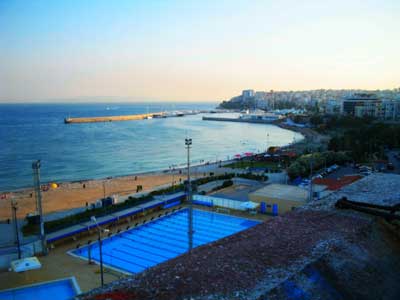
Zea Marina [Source]
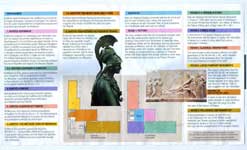
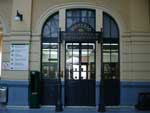
Electric Railway Museum (ISAP Museum)
Modern era
The city of Piraeus and the church of Saint Spyridon; postcard of 1887.
Damage from the German bombing of Piraeus on 6 April 1941.
View of Castella from Mikrolimano.
Piraeus marine, Zea (Pasalimani).
Inside view of Piraeus metro station.
With the creation of the modern Greek state and the proclamation of Athens as the capital in 1832, the port again acquired a reason for existence and growth, and developed into a great commercial and industrial centre; populations, mainly from the Aegean Islands, continued arriving to reside in Piraeus. A town plan for Piraeus was also drawn up and approved by King Otto, but it was not completely fulfilled, as it was revolutionary for its time.[6] Following the establishment of Piraeus as a municipality in 1835 and the petitions from the new prosperous bourgeoisie that was emerging, municipal elections were held to elect a mayor for the city, who was to be Kyriakos Serfiotis from Hydra. Piraeus numbered around 300 inhabitants at the time.
Piraeus, from a deserted small town, quickly became the leading port and the second largest city in Greece, while its prime geographical location and closeness to the Greek capital helped it continually to grow, attracting people from across the country. A number of events contributed to the development of the city; amongst these were its ultimate declaration as the leading port of Greece, the completion of the Athens-Piraeus Railway in 1869, the industrial development of the area in the 1860s and the creation of the Corinth Canal in 1893, all of which left Piraeus more strategically important than ever. New buildings were constructed to cover the necessities of this growth, such as educational institutions, churches, the Stock Exchange Building, the Town Hall, the Central Market, the Post Office Building and charity institutions; the port was also supplemented and modernised, with dredging operations, the construction of the Royal Landing, the Troumba Pier and the quay-ways up to the Customs House area, the commencement of construction work on the Outer Moles and the completion of permanent dry-docks. At the end of the 19th century Piraeus had a population of 51,020 people.
The establishment of the Port Committee in 1911, which controlled the works of construction and maintenance of the port, and the Piraeus Port Authority in 1930, which made a more efficient job of managing a port slowly increasing in traffic, played a catalytic role in the city's development. The town flourished and neo-classical buildings were erected; one of them, which continues to ornament the present town, still stands as the Municipal Theatre, an excellent example of the area's once wider neoclassical architecture. After the decisive for the Greek nation period of 1912–1922, Piraeus experienced a great demographic explosion, with its population almost doubling to reach 251,659 in 1928 from 133,482 in 1920, an increase owed to the arrival of Greek refugees from Asia Minor after the Greco-Turkish War and the Asia Minor Catastrophe. Although there was an increase in the labour force, a variety of social problems also emerged with the concentration of new populations in the suburbs of the old city, such as Nikaia, Keratsini, Drapetsona and Korydallos.
However, the involvement of Greece in World War II came as a major setback to the city's progress. After the war the city began to develop once more, as damage to the port and the city were repaired and new additions took shape after 1955. Piraeus is now the third largest municipality in Greece; the city proper with its suburbs form the Piraeus urban area, which is incorporated in the Athens urban area, thus making Piraeus an integral part of the Greek capital. Furthermore, the port of Piraeus is an important international port and the largest of the country.
Geography
Piraeus is situated in the southwest part of the central plain of Attica, also widely known as the Attica Basin, in which the Athens agglomeration (urban area) sprawls across it. Piraeus is bounded by Mount Egaleo to the northwest, the Saronic Gulf to the south and west and is connected with the rest of the Athens Urban Area to the east and northeast. The "city proper" of Piraeus consists of a rocky peninsula, originally an island, featuring three natural harbours. In addition to the central one, called Kantharos in ancient times, the smaller harbours to the east are still in use, Zea also known as Pasalimani, and Munichia, the smallest of the three and widely known as Mikrolimano. Nowadays, Piraeus larger urban area includes the suburban harbours of Drapetsona, Keratsini and Perama. The central harbor is a hub of commercial and passenger shipping, whereas the two smaller ones cater to recreational and fishing craft as well as passenger hydrofoils.
Demography
Piraeus is the third largest municipality in Greece with an official population of 175,697 (in 2001).[9] The Piraeus Urban Area, part of the greater Athens Urban Area, is comprised by the city proper (municipality of Piraeus) and six other suburban municipalities, having a total population of 466,065 people (in 2001).[9]
The table below shows the historical population of Piraeus in recent times:[10]
Year Municipality population Urban area population
1951 186,088
1961 183,957
1971 187,458 439,138
1981 196,389 476,304
1991 182,671 456,865
2001 175,697 466,065
Culture
Archaeological sites
Part of Eetioneia, the ancient gate to the harbour and part of the fortification of Piraeus, built during the Peloponnesian War.
Among the archaeological sites of Piraeus, parts of the ancient Themistoclean Walls and Eetioneia, a mole in the entrance to the harbour, are still preserved in good condition. Excavations in Pasalimani revealed the Skeuotheke, an ancient structure where ship rigging equipment was stored, designed by architect Philon. In Kastella the Syrangion is to be found, which probably served as a sanctuary to the local hero Syrango, and the Cave of Arethusa, both prehistoric. Ruins of the ancient city at the basement of the cathedral of Agia Triada and the ancient Theater of Zea next to the Archaeological Museum, the ancient neosoikoi in Zea, Munichia and Kantharos navy yard, can also be seen.
The Bronze Statues
The discovery of four bronze statues at a construction site near the Tinaneios Gardens in Piraeus, Greece on July 18, 1959 is still remembered by an entire generation as an exciting and enthusiastic discovery in Modern Greek archaeology. These statues are now featured in the Piraeus Museum, and are largely responsible for the creation of the modern Archaeological Museum of Piraeus. While drilling in order to lay pipes, the Hydrex Company came across the hand of a bronze kouros (youth) at a depth of approximately 1.50 meters. Excavations began after the custodian of the local museum, Dimitrios Kalantonis, and the Director of the Archaeological Service, Yiannis Papdimitriou, were informed. Four noteworthy bronze statues were uncovered in the continuing excavations – the Archaic Apollo (the kouros whose hand had originally been seen), the large Artemis, a smaller Artemis, and a larger-than-life Athena. However, the enthusiasm for the dig led to poor documentation of the details and context of the finds, leaving rare photos taken by the media or public as the only record. There are multiple theories as to how the statues came to be carefully arranged within what is thought to have been a small square room. When and why the statues were apparently hidden is open to debate, along with their origins, date, and style. One early theory suggests that the statues had been stored near the harbor with the intention of being shipped to Italy. However, the presence of coins near the statues which date from a period of war opens up another possibility – that the statues were hidden for safe keeping, and then lost when the building was destroyed. Dating the concealment of the statues is another issue, as they may have been buried anytime between the 1st century BC and the 3rd century AD. The statue of the kouros was recognized to be of Apollo, and dated to the 5th century BC. The other three female statues, from the 4th century BC, show a different, more human, form of sculpture that sets them apart from their older companion.
Leisure and entertainment
The Veakeio Theater on the hill of Kastella, with view to the Saronic Gulf, Mount Hymettus and the southeastern part of Athens.
The Municipal theatre of Piraeus.
The city provides a wide variety of entertainment. Piraeus is famous for its tavernas and restaurants, renowned for their cuisine. Most are arrayed along the coasts of Mikrolimano and Piraiki, specializing in seafood and attracting many visitors, including tourists. The nightlife of the city is swinging, with numerous bars and nightclubs. Plenty of major shopping areas can be found on the central avenues of Piraeus, Iroon Polytechneiou and Grigoriou Labraki.
One of the most popular events in Piraeus is the Ecocinema International Film Festival, staged annually in late February. During this event, a number of films are screened at the Atticon Cinema and the Cineac Cinema, both of which are to be found within the city's Town Hall Square. In the summer, the Maritime Festival and the Piraeus Rock Wave Festival take place,[11] while the Three Kings' Way Festival marks the beginning of the carnival with all the associated costumes and entertainment.[12]
The Municipal Theater of city has been the center of the arts in Piraeus, hosting a variety of cultural events including theater, dance and music events. The open air Veakeio Theater in Kastella is a popular destination during the summer and hosts concerts, folk music bands as well as Greek and foreign troupes, while the Menandreio Theater, widely known as Delfinario, is popular for hosting variety shows. Village Park, a large multipurpose center, part of the Village Cinemas chain and built in suburban Agios Ioannis Rentis, attracts a large number of people from the whole of Athens offering a diversity of shops, cafes, restaurants, in addition to the twenty cinemas which make it the largest cinema complex in Greece. Next to it, the Allou Fun Park is the latest and largest amusement theme park in Athens filled with rides and attractions, restaurants and pastry shops.[13]
Museums
External view of the Hellenic Maritime Museum in Freatida.
Piraeus is home to several museums and other institutions of great interest within their field. The Archaeological Museum of Piraeus displays objects from the classical antiquity found at the area of Piraeus and the greater coastal zone, typical of the history and culture of the ancient city. The city also houses the Hellenic Maritime Museum with exhibits related to the nautical tradition of the Greek nation, the Historical Museum, the Panos Aravantinos Decor Museum, the Georgios Averof Museum Ship and the Museum of Electric Railways, hosted in the Piraeus station. The Municipal Art Gallery and the Municipal Library, one of the largest in Greece, are also prominent within the culture of Piraeus.
Sport
Peace and Friendship Stadium.
Inside the Karaiskakis Stadium.
Traditionally, Piraeus has played a major role in Greek sports. The city boasts the most popular and one of the most prestigious Greek multisport clubs, Olympiacos CFP. The other major club is Ethnikos Piraeus, with a long athletic tradition as well. In football, Olympiacos F.C. is the most successful club in Greece, having won by far more titles than any other Greek football club, and its ground is at the Karaiskakis Stadium, in Neo Faliro. Ethnikos Piraeus F.C. had a long-year presence in Super League Greece and also used the Karaiskakis Stadium as home ground, but in recent years the club has competed in lower divisions and currently plays home matches at the Helleniko Stadium, in Ellinikon. Other football clubs in Greater Piraeus with significant tradition are Ionikos of Nikaia and Proodeftiki of Korydallos.
In basketball, Olympiacos B.C. is the only major club from Piraeus, one of the most successful at domestic and European level, and its home arena is the Peace and Friendship Stadium, while the volleyball department of the same club, Olympiacos S.C., is the dominant domestically and has made great success in European competitions as well. Piraeus rides really high in water polo, where Ethnikos Piraeus and Olympiacos departments have entirely dominated in Greece; the first is considered the "Emperor" of the sport and the latter is the only Greek water polo club to have been crowned European Champion.
First class sporting facilities can be found in Piraeus. The Karaiskakis Stadium, built in 1885 as a bicycle track, enlarged in 1964 and completely rebuilt in 2004, is the second largest football venue in Greece with a capacity of 33,334 and one of the most modern in Europe. It hosted the 1971 UEFA Cup Winners' Cup Final and several games of the football tournament in the 2004 Summer Olympics, while it was used as a velodrome in the 1896 Summer Olympics. The Peace and Friendship Stadium, part of the Faliro Coastal Zone Olympic Complex and built in 1985 opposite to the Karaiskakis Stadium, is the second largest indoor arena in the country and one of the most impressive around Europe,[14] having hosted multiply major international events in several sports, including the volleyball tournament in the 2004 Athens Olympics, the 1998 FIBA World Championship, the EuroBasket 1987 and the Final Four of the Euroleague 1993.
Greek Maritime Industry
Further information: Greek shipping
The building of the Maritime Retirement Fund.
In addition to being the largest marine – based shipping centre of Greece, Piraeus is also the commercial hub of Greek shipping, with most of Greece's shipowners basing their commercial operations there, largely centred around the street Akti Miaouli. In its capacities as host to Greek shipping, Piraeus has been affected significantly by the various governments of Greece. Following World War II, the Greek government attempted to nationalize the proceeds of the insurance payments given to Greek shipowners who had lost vessels as a result of those vessels having been commandered by the Allied Forces; the insurance had been provided by Lloyd's of London and guaranteed by the coalition of the allied forces. Although the Greek shipowners ultimately won their case against the Greek government in the British courts, most were uninterested in continuing to base their headquarters in Piraeus both out of distrust of the Greek government and the fact that the war had left the greater Athens area in a state of severe poverty. As a result, the Greek shipowners left Piraeus en masse in favor of operations in London, New York, Alexandria and other major shipping cities.
1967 Military junta
Further information: Greek military junta of 1967-1974
In 1967, when a group of colonels staged a coup d'état against the government, in order to increase desperately needed revenues, the junta offered lavish incentives for Greek shipowners to bring their companies back to Piraeus. This included both tax incentives and other inducements, as evidenced by the fact that Aristotle Onassis was allowed to purchase the entire island of Skorpios, which otherwise would have been a violation of Greek coastline laws.
1974 democratic government
The "Costa Concordia" in Piraeus harbour.
The pedestrian bridge outside the metro station.
After the junta fell in 1974, the successive democratic government generally maintained the deregulation of Greek-based shipping, and many shipowners have maintained commercial operations there since. Today, however, as a result of traffic congestion plaguing the Athens area, and the fact that most shipowners reside in the lavish northern suburbs of Athens, many shipowners have opted once again to move their bases away from Piraeus to Northern Athens.
Shipping today
Piraeus, nevertheless, is still a major centre for Greek and international shipping, and bi-annually it acts as the focus for a major shipping convention, known as Posidonia, which attracts maritime industry professionals from all over the world. Nowadays, Piraeus is one of the largest ports in Europe, and the annual number of 19 million passengers makes it the third largest worldwide, in terms of passenger transportation. Piraeus is also 47th worldwide in cargo traffic and at the top of all eastern Mediterranean ports. The central port serves ferry routes to almost every island in the eastern portion of Greece, the island of Crete, the Cyclades, the Dodecanese, and much of the northern and the eastern Aegean Sea, while the western part of the port is used for cargo services.
The following operators serve the Port:
Minoan Lines
ANEK Lines
Blue Star Ferries
GA Ferries
NEL Lines
LANE Lines
Aegean Speed Lines
Hellenic Seaways
Louis Cruise Lines
Monarch Classic Cruises
Landmarks
The Neo-Byzantine Cathedral of Holy Trinity ("Agia Triada").
The churches of St. Nicholas (left) and Sts. Constantine and Helen (right).
The city of Piraeus is stamped by the diversity of culture among its neighbourhoods. The hill of Kastella is one of the most prosperous and attractive neighbourhoods of the city, with a panoramic view over Athens and the Saronic Gulf. It is characteristically elegant due to the numerous neo-classical mansions and luxurious houses, while the Veakeio Theater and a church dedicated to the Prophet Elijah are the most popular buildings. The coastal area of Neo Faliro has been upgraded and is also prominent with the Peace and Friendship Stadium and the Karaiskakis Stadium, an indoor arena and a football ground respectively lying opposite one another, predominating. Mikrolimano and Pasalimani, the smaller harbours of the city, attract large numbers of visitors because of their picturesqueness and vigorous nightlife, hosting fishing boats as well as yachts and cruise ships. On the other hand, Kaminia is a working class neighbourhood which still preserves the traditional look of past ages. The Municipal Theater in downtown Piraeus was built in 1885 and today is an impressive neo-classical building. Located across the Neo-Byzantine Piraeus Cathedral, it constitutes one of the most renowned landmarks of the city and a popular meeting place.
International relations
See also: List of twin towns and sister cities in Greece
Twin towns — Sister cities
Piraeus is twinned with:
France Marseille, France, since 1984[15]
United States Worcester, United States
Argentina Rosario, Argentina
Czech Republic Ostrava, Czech republic
Russia St. Petersburg, Russia, since 1965[16]
United States Baltimore, United States[17]
Romania Galaţi, Romania
Bulgaria Varna, Bulgaria
China Shanghai, China
Russia Arkhangelsk, Russia
Mayors of Piraeus
Kyriakos Serfiotis (1835–1841)[6]
Petros Skylitsis-Homiridis (1841–1845) and (1848–1854)
Antonios Theoharis (1845–1848)
Loukas Rallis (1855–1866)
Demetrios Moutzopoulos (1866–1874)
Tryfon Moutzopoulos (1874–1883) and (1895–1903)
Aristides Skylitsis (1883–1887)
Theodoros Retsinas (1887–1895)
Pavlos Damalis (1903–1907)
Dimisthenis Skylidis-Homiridis (1907–1914)
Anastasios Panagiotopoulos (1914–1932)
Mihail Rinopoulos (1932)
Athanasios N. Miaoulis (1932)
Sotiris Stratigis (1932–1928)
Michail Manoussos (1938–1941)
Georgios Andrianopoulos (1951–1966)
Georgios Kyriakakos (1966–1967)
Aristidis Skylitsis (1967–1974)
Vasilios Zeppos (1974–1975)
Anastasios Voulodimos (1975–1978)
Georgios Kyriakakos (1978–1982)
Ioannis Papaspyrou (1982–1986)
George Andrianopoulos (1987–1990)
Stelios Logothetis (1991–1998)
Christos Agrapidis (1999–2006)
Panagiotis Fasoulas (2007–2010)
Vasilis Michaloliakos (2011–
Universities Institutes
University of Piraeus
Technological Education Institute of Piraeus

76 : Statue of a Sphinx. Parian marble.
See also
List of settlements in Attica
Never on Sunday – Film set in Piraeus
Geography of Greece
References
This article incorporates text from a publication now in the public domain: Chisholm, Hugh, ed (1911). Encyclopædia Britannica (11th ed.). Cambridge University Press.
Bibliography
Warner, Rex; Finley, Moses I. (1972). History of the Peloponnesian War. Penguin Classics. ISBN 0140440399.
Steinhauer, G. 2007. “The Piraeus bronze statues.” In Great Moments in Greek Archaeology, edited by P. Valavanis, translated by D. Hardy, 326-31. Los Angeles: Getty Publications.
Notes
^ National Statistical Service of Greece (2002) (in Greek). Στατιστική Επετηρίδα της Ελλάδος 2002. National Statistical Service of Greece. p. 54. "The table includes the urban areas of Greece, officially defined by the National Statistical Service of Greece, powered by the Ministry of Finance of Greece. The municipality of Piraeus and its greater area belong to the Athens urban area or Greater Athens (Πολεοδομικό Συγκρότημα Αθηνών)."
^ "Presentation". www.olp.gr. Retrieved 2008-12-27.[dead link]
^ "Piraeus by Maritime Database". www.maritime-database.com. Retrieved 2008-12-27.
^ "ANEK Lines – Piraeus". www.anek.gr. Retrieved 2008-12-27.[dead link]
^ "Container terminal". www.olp.gr. Retrieved 2008-12-27.[dead link]
^ a b c d "The Port of Piraeus Through The Ages". greece.org. Retrieved 2009-09-27.
^ "Τα τείχη των Αθηνών" (in Greek). National Hellenic Research Foundation. Retrieved 2009-09-27.
^ Warner & Finley 1972, p. 152
^ "World Gazetteer: Piraieús – profile of geographical entity including name variants". World Gazetteer. Retrieved 2008-12-27.
^ "Piraeus Events, Festivals, Things to Do: Events in Piraeus Area, Greece". www.piraeus.world-guides.com. Retrieved 2008-12-29.
^ "Three King's Way Festival, Piraeus". www.planetware.com. Retrieved 2008-12-29.
^ "Allou Fun Park". www.breathtakingathens.com. Retrieved 2008-12-30.
^ "Athens 21st Century – The Olympic Coastal Complex". athens-today.com. Retrieved 2008-12-28.
^ "Marseille Official Website – Twin Cities" (in French). Ville de Marseille. 2008. Retrieved 2008-11-26.[dead link]
^ "Saint Petersburg in figures – International and Interregional Ties". Saint Petersburg City Government. Retrieved 2008-10-23.
^ "Baltimore City Mayor's Office of International and Immigrant Affairs – Sister Cities Program". Retrieved 2009-07-18
Greece :
A - B - C - D - E - F - G - H - I - J - K - L - M -
N - O - P - Q - R - S - T - U - V - W - X - Y - Z
| Ancient Greece
Science, Technology , Medicine , Warfare, , Biographies , Life , Cities/Places/Maps , Arts , Literature , Philosophy ,Olympics, Mythology , History , Images Medieval Greece / Byzantine Empire Science, Technology, Arts, , Warfare , Literature, Biographies, Icons, History Modern Greece Cities, Islands, Regions, Fauna/Flora ,Biographies , History , Warfare, Science/Technology, Literature, Music , Arts , Film/Actors , Sport , Fashion --- |
Retrieved from "http://en.wikipedia.org/"
All text is available under the terms of the GNU Free Documentation License


